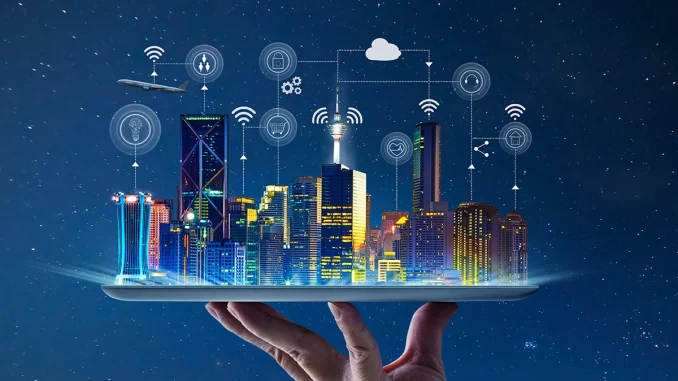
Introduction
In an era marked by rapid urbanization and technological advancement, smart cities have emerged as a promising solution to the myriad challenges faced by urban centers worldwide. These smart cities are harnessing the power of artificial intelligence (AI) to transform the way we live, work, and interact within urban environments. In this article, we will explore the remarkable rise of smart cities and the pivotal role that AI plays in shaping the future of urban living.
The Smart City Revolution
As the global population continues to migrate to urban areas, cities are facing an ever-increasing array of challenges. Issues like traffic congestion, pollution, inadequate infrastructure, and the strain on resources have become commonplace. To address these challenges, city planners and governments have turned to technology, giving birth to the concept of smart cities.
A smart city integrates advanced technologies, data-driven insights, and digital infrastructure to optimize urban living. These cities leverage AI to enhance efficiency, sustainability, and the overall quality of life for residents. Let’s delve into some of the ways AI is transforming smart cities:
Smart Transportation
One of the most visible aspects of smart cities is their transportation systems. AI-driven solutions are revolutionizing urban mobility by optimizing traffic flow, reducing congestion, and improving public transportation. Self-driving vehicles, predictive maintenance for public transit, and smart traffic management systems are all powered by AI algorithms. These advancements aim to make commuting more efficient and eco-friendly.
Sustainable Energy Management
Smart cities are at the forefront of sustainability efforts. AI-driven energy management systems monitor and optimize energy usage in real-time, reducing waste and carbon emissions. Smart grids, energy-efficient buildings, and renewable energy sources are integral components of this sustainable approach, ensuring a greener future for urban areas.
Enhanced Public Services
AI is enhancing public services by automating administrative tasks, enabling chatbots for citizen inquiries, and providing predictive analytics to allocate resources more efficiently. This results in quicker responses to citizens’ needs and improved service delivery in areas such as healthcare, public safety, and waste management.
Data-Driven Governance
Smart cities are data-rich environments. AI algorithms analyze vast amounts of data collected from various sources, including sensors, social media, and mobile apps. This data informs decision-making processes, enabling city officials to make more informed choices about resource allocation, urban planning, and policy development.
Smart Infrastructure
From smart street lighting that adjusts brightness based on traffic and weather conditions to real-time monitoring of infrastructure for maintenance needs, AI is playing a pivotal role in ensuring that urban environments are safe, efficient, and well-maintained.
Improved Quality of Life
Ultimately, the goal of smart cities is to enhance the quality of life for residents. AI-driven healthcare systems can provide personalized medical advice and early disease detection. Smart waste management reduces environmental impact and improves sanitation. Access to public services becomes easier and more convenient, all contributing to a higher standard of living.
Challenges and Considerations
While the rise of smart cities is undoubtedly promising, it also raises important considerations. Data privacy and security concerns must be addressed to protect citizen information. The digital divide, where not all citizens have equal access to technology, needs to be bridged to ensure inclusivity. Additionally, the ethical use of AI and transparency in decision-making processes are crucial for building trust within the community.
Conclusion
The rise of smart cities is a testament to the transformative power of AI in shaping urban living. These cities are redefining how we navigate our daily lives, interact with our surroundings, and address the challenges of our rapidly growing urban populations. As technology continues to advance, we can expect even more innovative solutions to emerge, further enhancing the sustainability, efficiency, and overall quality of life in our urban centers. The future of urban living is undoubtedly bright, and it is being driven by the relentless march of AI-powered innovation.